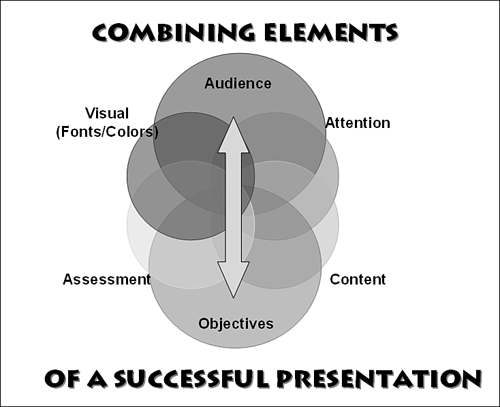Getting Results from a Presentation
| All your attention and hard work to create the perfect slide show is bound to pay off. Or is it? Just how do you know whether your presentation is successful? If people avoid eye contact with you after the presentation, that's one clue. But even if people tell you how much they enjoyed the presentation, how do you know if it was effective? One way to get good results from a presentation involves helping audience members know what it is that they've learned, in three phases:
Another way to assess effectiveness is to establish activities that let audience members tell you what they've learned. Review your objectives and determine how you can measure whether you've met them. You might have to rephrase your objectives so that you can assess observable behavior. Here are some examples:
Not all situations lend themselves to this kind of assessment. But often they do. If you never find out how well you've communicated with the audience, chances are the next time you make the presentation, you'll repeat the mistakes you make this time. On the other hand, if you're the kind of presenter that I suspect you are, you'll find a great deal of satisfaction in seeing action as a result of what you present. In short, creating a successful presentation doesn't happen by accident. You start by assessing the audience and your objectives, and then you add content and other elements that meet those objectives (see Figure 16.9). Throughout this book you'll learn that there are lots of other things that can enhance your presentations, but with these basics, you'll be off to a good start. Figure 16.9. Various key elements combine to make an effective presentation, but of these, the audience and your objectives are probably the most important.
|
EAN: 2147483647
Pages: 154
